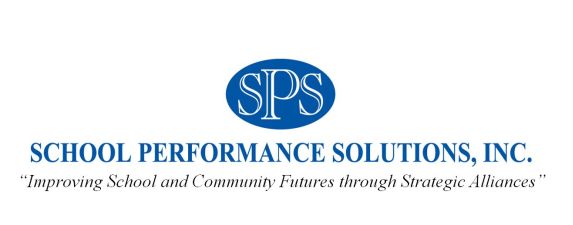Vision
The marriage of research and best practice is evident throughout the experiences of SPS leaders in their rescues of schools with complex dysfunctional practices and dismal performance. SPS leaders recommend use of strategies that examine the interrelatedness of many influential subsystems in and around schools and students.
Educational research increasingly examines school practices that utilize data and focus on school and student performance. Taken together and in parts, these data suggest courses of action that improve district and school performance health and increase rates of learning among school personnel and students.
SPS, in alliances with interested parties from foundation and corporate America, works with a wide variety of stakeholders to establish practices and build routines that improve and accelerate performance among school organizations, employees, and students.
SPS provides education experts to districts and schools to collaboratively establish strategies that produce desired impact in each district, school, and classroom. Specific performance improvement plans are customized for each school and evolve from the general research-based strategies listed below:
- Analyze and discuss performance data with district and school leaders, staff members, students, and parents to develop a better understanding of the causes of underperformance and the obstacles to improvement;
- Examine existing district and school structures and practices, and map relationships among them that inhibit or support improvement;
- Determine district, school, and classroom strengths, needs, and improvement opportunities;
- Select the best options for school and classroom improvement;
- Recommend best practices and structures to achieve better results;
- Measure progress appropriately for implemented practices and revise strategies to improve performance and obtain higher student achievement;
- Analyze new achievement results and discuss their potential impact on teacher and leader training and decision-making;
- Make adjustments to plans and reallocate resources to align future practices with new achievement goals; and
- Train and mentor teachers and district and school leaders to continue these processes independently of SPS.
These strategies produce cyclical improvement processes that boost achievement and nurture the implementation of continuous improvement. Continuous improvement is possible only when these processes become routine in daily district and school operations, and energizes employee and student learning.
SPS provides to low socio-economic and low performing districts and schools an opportunity to use the Clinical Practice Model at rates below fair market value.
Clinical Practice Model
The following is reprinted with permission from LeadershipEnergies, LLC.
“LeadershipEnergies has adapted medical models of diagnosis, prescription, and prognosis to improve performance health and well-being of education organizations. These models guide leaders through an identification of the strengths, needs, and improvement opportunities of district and school functions that impact student achievement (diagnosis); a selection of appropriate interventions and remedies (prescription); and an accurate prediction of outcomes and progress along the way (prognosis).
Use of these models leads to the development of knowledge and skills that improve decisionmaking and guide and hold districts and schools accountable for performance improvement and higher student achievement. Faithful implementation of clinical practice produces a systematic compilation of the remedies and interventions that work well or do not, and that knowledge of what works under local conditions becomes the library of professional experience that benefits all employees.
This new knowledge is applied to all levels of the organization and has a positive influence on work at board, district office, school, employee, and student performance levels. Clinical practice is a systematic approach to problem solving through a comprehensive examination of performance systems that reveals performance health levels throughout the organization. Clinical Practice uncovers the interactions that shape and influence student behavior and performance and leads to improvements at the root causes of underperformance.
The Clinical Practice Model is implemented through four consecutive phases: Discovery; Solution Scenario; Implementation; and Assessment and Revision in twelve steps. The four phases support goals of identifying strengths, needs, and improvement opportunities using data that create understanding of past and current performance; identify symptoms and other findings to develop diagnostic options that are reduced to a prescription; implement interventions, train teachers, leaders and staff, and track, measure, and report progress; and determine if improvements are real before revising prescriptions to refine practice further to increase student achievement.
Improved performance arises out of new levels of adult mastery achieved by teachers and administrators that precede student performance improvements. District, school, and employee performance is connected to student achievement in seventeen major performance health systems called Critical Performance Categories (CPC). Performance improvements in one or more of the CPC create an upside potential for increases in student achievement managed by employees spread among schools classrooms, departments, offices, grade levels, etc.
Monitoring progress and measuring changing performance health levels in and among the CPC are conducted through clinical practice protocols and recorded on Vital Sign Performance Indicators (VSPI) that illustrate local performance levels compared to state standards, districts and schools of similar characteristics, and better performers. Also, VSPI are used to make new diagnoses, and contribute to prescriptions that come closer to solving reasons for underperformance.
Clinical practice provides the framework and protocols that organize and focus efforts on increasing commitment and capacity of the entire organization and its many parts to improve performance health and increase student achievement.”

